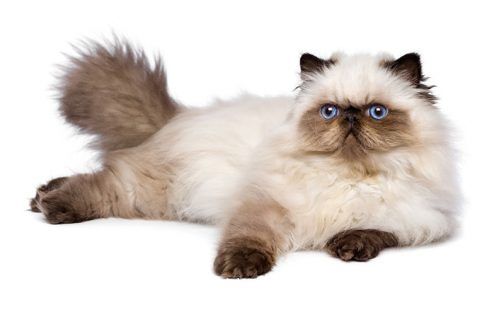Himalayan
IUCN
LCBasic Information
Feature
Has Siamese-like spots and Persian-like blue eyes
Distribution and Habitat
Origin: UK, US
Appearance
The Himalayan cat has short, straight limbs, a short body, and a deep chest. Its powerful dome-shaped head, round cheeks and jaws, small ears and short nose, and big round eyes are almost similar to Persian cats. The eyes are blue, and the bluer the better. Its fur is long and soft, with dark spots. The contrast of the color depth of the spots is obvious and eye-catching. There are 7 types of spots, including seal points, chocolate points, blue points, lilac points, orange points, tortoise shell points, and blue cream points. They are all very ornamental. These color spots are distributed on the cat's legs, feet, tail, ears and face.
Details
The Himalayan cat is named because it looks very similar to the rabbit with this name, and has nothing to do with the Himalayas. The breeding of Himalayan cats can be traced back to 1924, when a Swedish geneticist crossed Siamese cats, Burmese cats and Persian cats, but did not get obvious results. After 1930, British breeders and researchers from Harvard University in the United States continued their research and finally bred a long-haired, Siamese cat-spotted, medium-sized breed. After continuous improvement, its standard breed was officially recognized in the UK in 1955 and in the United States in 1957. After that, its size gradually approached that of Persian cats, and its color was closer to that of Siamese cats.

Female cats go into estrus early and can mate and give birth at 8 months old, but in order to ensure the quality of reproduction, they are generally not allowed to reproduce until they are 1 year old. Male cats can only be used as breeding cats when they are 18 months old. Each litter has 2 to 3 puppies. When kittens are born, they are covered with short white hair all over their bodies. After a few days, color spots begin to appear, first on the ears, then on the nose, limbs and tail.
Protect wild animals and stop eating game.
Maintaining ecological balance is everyone's responsibility!








